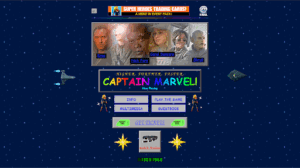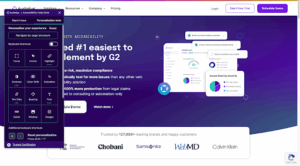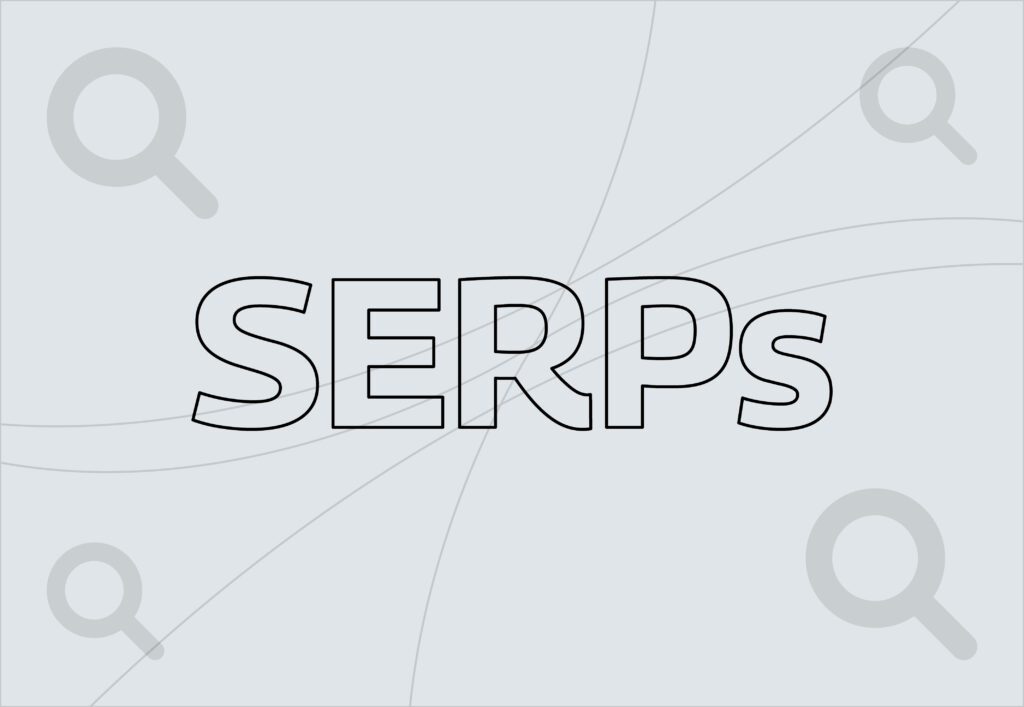
The European Accessibility Act: What you need to know

Big grey buttons, ticker tapes, and visit counters; all the classic elements of an early 00’s website. For the release of Captain Marvel in 2019, we were treated to a glimpse back at these kinds of sites. Whilst the site below brought a happy hit of nostalgia for most, the vast majority of developers agree that the thought of putting a site live in this state for a paying client fills us with a mild sense of panic.
Since the early 2000s, the web has come a long way with what we as developers can do with design, what we can serve to our users and the types of screen sizes that users are visiting websites from. As the internet becomes an even bigger part of our daily lives, with an increased 17.8% since 2020, as agencies and businesses, we need to consider the demographics of users that might be accessing the content that we put out.

What is the EAA?
The EAA, or the European Accessibility Act, is an act aimed at improving the accessibility of products and services for people with disabilities within the EU. It aims to create a more inclusive and accessible market by establishing common accessibility rules across.
How will it affect businesses?
As of the 28th June 2025, all new products and services will need to be accessible to people with disabilities across the EU. This is a huge step towards making the internet and all sites accessible to people with disabilities, who are already at a higher risk of experiencing exclusion from various aspects of society.
To back up these standards, the European Union is introducing fines. These fines for non-compliance with the European Accessibility Act (EAA) can vary significantly, ranging from €5,000 to €20,000 or more per violation. The exact amount depends on the severity of the breach, the type of organisation, and the specific member state. AudioEye has an excellent post that goes into much deeper detail about the financial implications of not complying with the upcoming changes.
Failing to comply with the European Accessibility Act (EAA) can significantly damage a brand’s reputation. By excluding individuals with disabilities, businesses risk alienating a substantial portion of their potential customer base, leading to negative publicity and decreased customer loyalty. Furthermore, non-compliance can result in hefty fines, which not only impact financial stability but also create a perception of negligence and disregard for inclusive practices, tarnishing the brand’s image and ethical standing in the eyes of the public.
Regardless of your business’s industry, preparing for the European Accessibility Act (EAA) is crucial. With the introduction of these new regulations, it shoulders the responsibility of ensuring that a website is accessible firmly with businesses.
Preparing for the new regulations
You have several options to ensure compliance. Businesses can choose to build a completely new website that adheres to the EAA guidelines from the ground up, which, if your website is a couple of years old, is a great opportunity for a refresh and introduction of new features.
Alternatively, you can retroactively fix their existing site, addressing accessibility issues and making necessary changes. This can come with its own challenges though as some sites can be difficult to work with especially if there are a wide variety of failings; it can take a considerable amount of time and expertise to work through an existing sites theme and files to make sure that all types of posts, pages and content formats not only are compliant on desktop but are still compliant when they respond to different screensizes and devices.
The third option, and certainly not the preferred choice, is to install a plugin onto your website which converts the existing format into an EAA-compliant format. Although this should never be chosen as a permanent solution, it’s a good stopgap between the failings that may be present in your existing website and implementing one of the solutions that are stated above. If you’re in need of buying yourself a little bit of time between now and fitting a permanent solution, here are a couple of solutions for consideration:
AudioEye
AudioEye are a UK-based company that specialises in accessibility solutions for a wide range of CMSs and bespoke solutions.
As can be seen in the screenshot below, when the plugin is installed and configured, it gives the user the ability to manipulate their experience on a website in numerous ways. From changing font size, to highlighting links, to even having a reading guide for users who find it easier to access a website when text they’re reading is highlighted in a different colour, such as people with dyslexia.
To see how AudioEye could work for your business as a stopgap, you can click here to get a 14-day free trial of their automated solution. They also use their own solution on their website, so you can experience the interface and how it changes the experience.

Image source: https://www.audioeye.com/?referrer=embryo
AccessiBe
AccessiBe is an accessibility company based in America that, according to their website, has a vision to “make the internet accessible so that everyone, with and without disabilities, can enjoy what it has to offer.”
What stands out about AccessiBe is that they offer a wide spanning range of integrations with different services: from WordPress to Shopify to even custom integrations.
Their pricing structure is based on how many page views your website gets. If you’re running an e-commerce site that has a lot of browsing and clicking between products for comparison, it could become costly quickly which is worth taking into consideration when deciding on your stopgap solution.

You can read more about AccessiBe and what they offer by clicking here.
The main takeaway from this entire post should be that taking early action is highly recommended to avoid potential fines and brand damage, and to ensure your website is accessible to everyone.
“We take a serious stance on EAA regulations on accessibility. I strongly believe that we should all aim to make the web accessible for everyone. Businesses should be aware that not complying could not only damage their brand but also leave them open to fines. I would always recommend taking early action to comply with new regulations.” – Grace
Are there specific things I need to be checking for?
There are a vast number of individual items that make a site truly accessible but they all fall under the POUR principles:
Perceivable – Your website or asset must be presented to your users in ways that everyone can perceive. For example, sites must take into consideration users who might have sensory differences in vision or sound.
Operable – All components and navigation on the site must be usable by all. This means throwing out designs and functionality that limit navigation, input methods or interactions that might have time constraints.
Understandable – All the information that we present on sites and assets must be delivered in a consistent way that allows various reading methods and input assistance. For example, ensuring that important text on websites is presented in the correct HTML wrappers instead of being static in an image so that screen readers are able to access it.
Robust – Content must be robust enough to be interpreted by a wide variety of browsers and devices, including assistive technologies like screen readers.
What is Embryo doing to prepare for this change?
One of our core values is curiosity; Our curiosity is what allows us to understand the problems brands face. It drives us to delve deeper, widen our view and find insights that others can’t see.
As part of this, we’re ensuring that every creative in the process of designing your website right the way through to handing over your website is trained in the new standards, best practices for implementing solutions to new and existing challenges and still ensuring that we go above and beyond when it comes to delivering exceptional user experiences.
Our developers are putting aside weeks of time to participate in training sessions that help us understand what is required to meet EAA standards at a fundamental level. Our UI designers are also taking time to expand their knowledge on the subject of accessibility to ensure that the design of a new site, landing page or social media asset that is presented and delivered meets these standards while still remaining firmly within your brand guidelines.
We’re also in the process of implementing new checks and processes in our creative process that mean more eyes internally are seeing assets and designs to keep our standards as high as ever, so you can be certain that the deliverables are in line with EAA standards.
Tools for checking your site
Are you unsure if your current site meets the new accessibility standards? There are a host of free tools online that you can use to check your current website to see where it stands. Here are two of the tools that I use day to day to make sure that the sites I’m building are accessible to users:
Colourblind checker
With nearly 300 million users worldwide who are colourblind, ensuring that the colour contrasts of text and backgrounds for our users is a key part of making sure that users can access our sites. Toptal has a great tool that simulates how users with different types of colour blindness will see your website.
Accessibility checker
It can often be difficult to get an overview of whether there are issues with an existing website. To check a whole page in one go, I use https://www.accessibilitychecker.org/, which gives an overview of all the issues with their relevant HTML elements.
Conclusion
Although it’s always been important to ensure that all people are catered for when it comes to accessing websites, it’s now becoming law. Businesses should take time to understand what is required of them and their websites to make sure that their website(s) are available to all users, especially those who may require adaptations.
There are some great out-of-the-box solutions that work well as stop-gaps for when these new regulations become law; however, for a more robust and comprehensive solution, it may be time for a new website and a refresh of your users’ digital experience. Our team are on hand to talk through your project.


